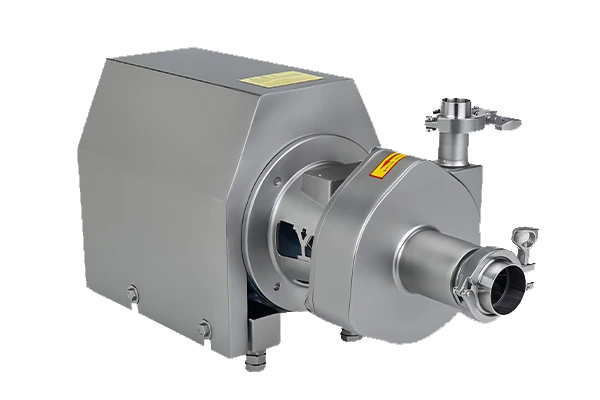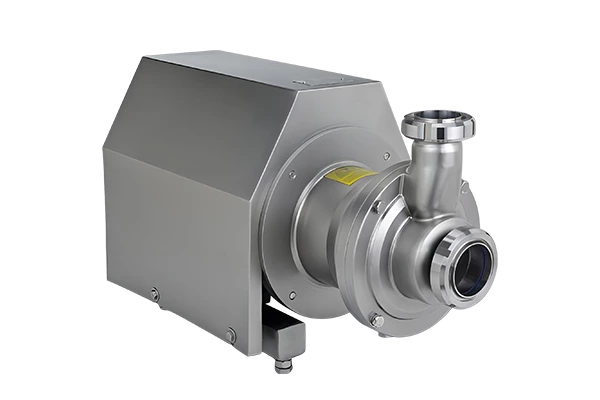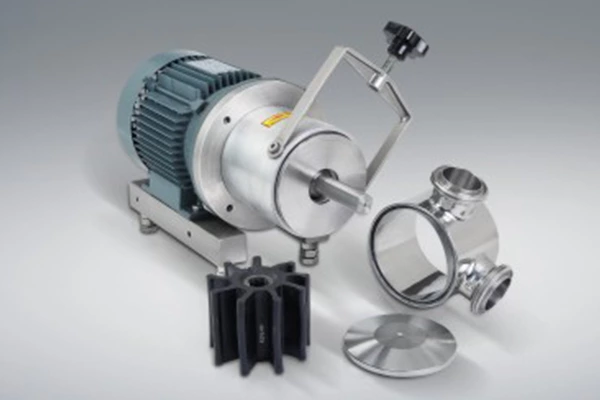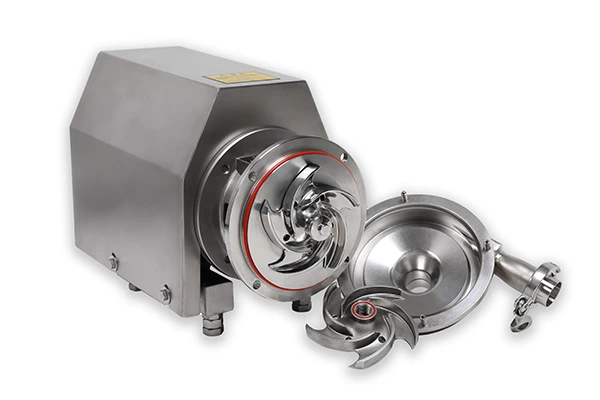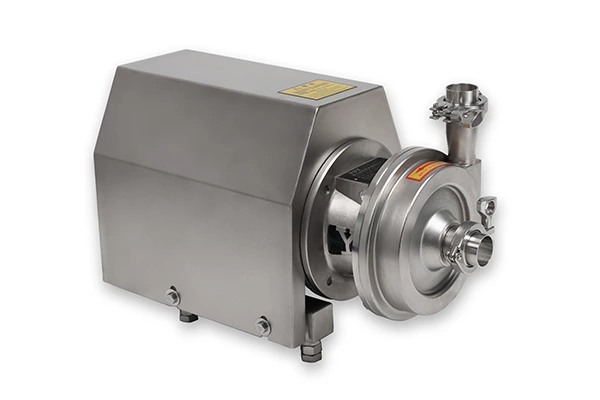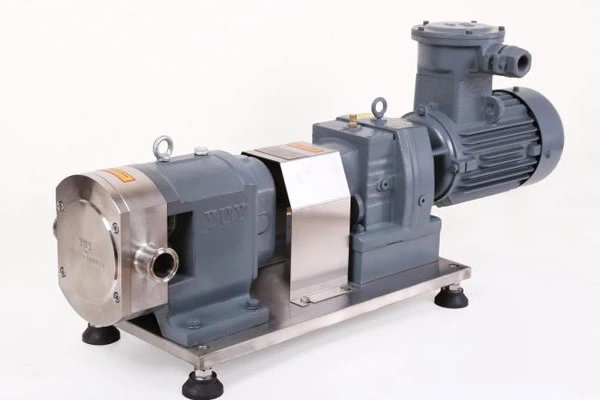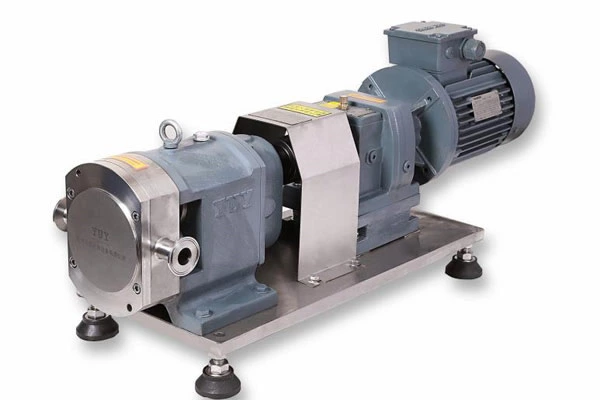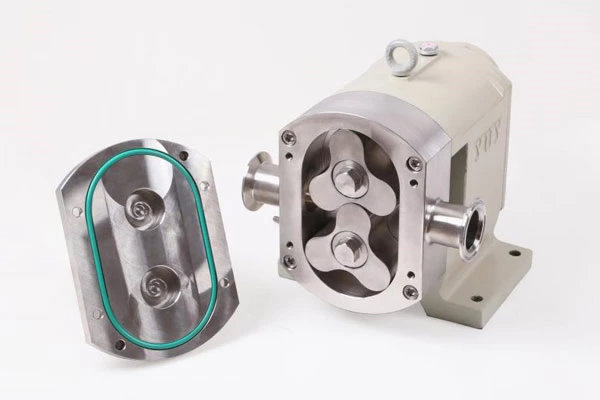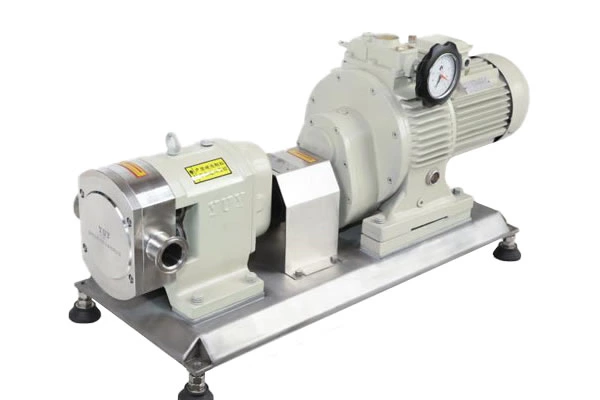Cavitation Phenomenon Of Sanitary Negative Pressure Pump
Pressure reduction is a condition for cavitation to occur, and the rapid collapse of a large number of bubbles in the water is the internal cause of cavitation. Therefore, in order to improve and reduce the cavitation damage of the impeller of the main discharge Sanitary Negative Pressure Pump of the coal mine, it is necessary to increase the inlet pressure of the sanitary negative pressure pump.
In the coal mine, the sanitary negative pressure pump is equivalent to the "heart" of the coal mine. The performance of the sanitary negative pressure pump directly affects the production safety of the coal mine. It is of great significance to ensure the integrity and stability of the coal mine drainage equipment, especially the main discharge sanitary negative pressure pump. The impeller of the sanitary negative pressure pump is the mechanical energy of the motor converted into the pressure energy and kinetic energy of water by the sanitary negative pressure pump. For the sanitary negative pressure pump, as long as the impeller performance is good, the normal operation of the sanitary negative pressure pump can be guaranteed. However, for a long time, a major problem that has plagued the normal operation of the sanitary negative pressure pump is the damage of the impeller blades of the sanitary negative pressure pump. The main reason for this damage is often the cavitation of the impeller. Therefore, it is very critical to study the cause of cavitation in the pump and how to prevent cavitation. This is also the key issue that designers should consider during the selection, design and installation of coal mine drainage equipment. The main reason for the damage of the impeller of the sanitary negative pressure pump of the main discharge of the coal mine during actual use is the wear of solid particles in the water, which increases the weight of the mine water and increases the possibility of cavitation. For this reason, this paper specifically studies the specific situation of the sanitary negative pressure pump of the main discharge of the coal mine, and studies the influence of the presence of solid particles on the damage of the impeller.
1. Causes of cavitation
When the absolute pressure at the water inlet of the pump is reduced to the cavitation pressure at the water temperature at that time, the water vaporizes. Water forms gas at the water inlet, and many small bubbles are formed at the water inlet. When these small bubbles flow into the high-pressure area with the water, the bubbles burst quickly, and the surrounding liquid immediately fills the original bubble cavity. Since the bubble burst time is very short, a hydraulic shock of up to several hundred megapascals is formed. Bubbles are constantly formed and burst, and huge hydraulic impacts act on the impeller repeatedly at a frequency of tens of thousands of times per second. Over time, the impeller blades will gradually peel off due to fatigue; at the same time, there are some active gases (such as oxygen) mixed in the bubbles, which gradually make the smooth layer of the metal rough due to electrolysis. After the roughness of the metal surface is destroyed, mechanical erosion is accelerated. In addition, during the formation and rupture of bubbles, a temperature difference will be generated at both ends of the flow-through components, and the cold end and the hot end will form an electric couple to generate a potential difference, thereby causing electrolysis on the metal surface, and the smooth layer of the metal will gradually become rough due to electrolysis. Under the combined action of mechanical erosion, chemical corrosion and electrochemistry, honeycomb pitting will soon appear on the metal surface, and gradually form cavities and damage. This phenomenon is called cavitation.
2. Serious impact on the pump after cavitation occurs
When cavitation develops to a certain extent, it will affect the performance of the sanitary negative pressure pump and hinder its normal operation. The main manifestations are as follows:
(1) Changes in pump performance When cavitation is first generated, there is no obvious effect on the external characteristics of the sanitary negative pressure pump. When cavitation develops to a certain extent, the power, efficiency, flow rate and head of the sanitary negative pressure pump will suddenly drop. When cavitation is fully developed, the effective flow area of the water flow will be greatly reduced, causing the water flow to be interrupted and unable to work.
(2) Cause vibration and noise When the bubbles burst, the liquid particles impact each other, generating noise and unit vibration. The mutual excitation of the two causes the pump to vibrate strongly, which is called cavitation resonance.
(3) Damage to the surface of the flow-through components Cavitation damage will greatly shorten the life of the sanitary negative pressure pump. When erosion and corrosion are severe, major accidents such as blade breakage or perforation will occur.
3. Impeller wear test analysis
Using the method of painting on the impeller blades, the location and degree of impeller damage were qualitatively analyzed. Experimental conditions: (1) Replace the mineral water with water containing a certain amount of sand to make the density the same as that of the mineral water (ρ=1025kg/m3), and perform wear tests under cavitation and non-cavitation conditions respectively; (2) Perform wear tests with clean water under cavitation conditions. After the sanitary negative pressure pump runs for 10 hours under the above two conditions, the impeller damage is observed and analyzed. In actual application, the most seriously damaged parts of the impeller of the main discharge sanitary negative pressure pump of the coal mine are the pressure surface and water absorption surface of the blade inlet. The blade material peels off to form pits, and even blade peeling occurs in severe cases: the blade outlet pressure surface is also seriously worn. The rear cover is uneven from the blade inlet to the middle of the blade, and is damaged to varying degrees. Practice has shown that only the blade inlet has obvious traces of solid particle friction when painted, and there are no cavitation points in the entire impeller blade flow channel. Under the condition of cavitation loss, the paint on the blade inlet end, the blade inlet pressure surface, and the blade outlet pressure surface has serious friction marks of solid particles, especially the blade inlet suction surface has a large area of cavitation points, which is basically consistent with the actual damage of the impeller of the main discharge sanitary negative pressure pump of the coal mine in terms of the damage location and degree, and the degree is better than that without cavitation. The experiment of clean water under condition 2 has no wear marks, only cavitation points, and the degree of cavitation is much smaller than that of sand-containing water, indicating that the mine water containing sand particles expands the range of cavitation. It can be seen that under the same fluid medium conditions, the damage when cavitation occurs is more serious than when cavitation does not occur; under the same cavitation conditions, the medium with solid particles is more serious than that without solid particles. Therefore, cavitation is the main cause of damage to the impeller of the main discharge sanitary negative pressure pump of the coal mine. Eliminating cavitation can reduce the damage of the sanitary negative pressure pump, and eliminating solid particles in the water can reduce the damage to a greater extent. The experimental results show that although we are not sure whether cavitation is related to the size of solid particles, we can verify the objective existence of the destructive effect.
4. Countermeasures and conclusions
From the above experiments, we can know that pressure reduction is a condition for cavitation to occur, and the rapid collapse of a large number of bubbles in the water is the internal cause of cavitation. Therefore, in order to improve and reduce the cavitation damage of the impeller of the main discharge sanitary negative pressure pump of the coal mine, improvements should be made in the following two aspects:
(1) Design and manufacturing. 1) Change the design of the impeller shape and optimize the structural parameters of the impeller to improve the external conditions for cavitation; 2) The blades and other parts through which water flows should be made of materials with good cavitation resistance; 3) Reduce the pressure loss ∑h of the suction pipe, the suction pipeline system includes the bottom valve, water filter, pipeline, elbow, etc., so that the installation design of these parts is reasonable and the loss is reduced, which is also an important way to reduce the cavitation phenomenon of the sanitary negative pressure pump; 4) Reduce the cavitation margin required by the pump itself. To this end, the diameter of the hand-level impeller suction port can be appropriately increased, or a bottomless valve can be used for drainage.
(2) Usage. 1) Under the conditions allowed by the installation, try to reduce the water suction height of the pump. This will make the allowable cavitation margin during pump operation larger. Generally, when the installation height is between 2 and 3.5 m, the cavitation of the pump is reduced. 2) Reduce the density of the well water. For mine water containing coal powder and silt, in order to reduce the density of the mine water and reduce the cavitation of the pump, sedimentation treatment should be done before the mine is drained. 3) Reduce the average flow rate of water flowing into the pump suction port.
